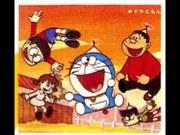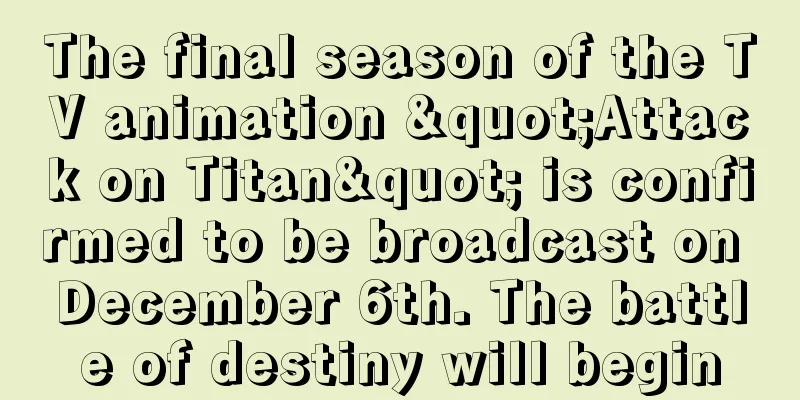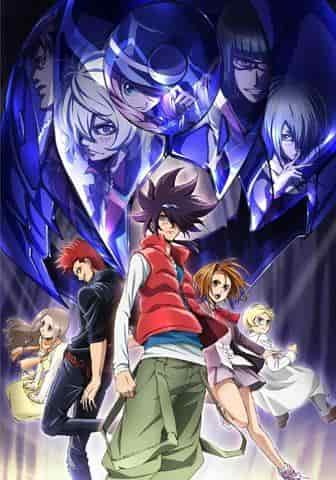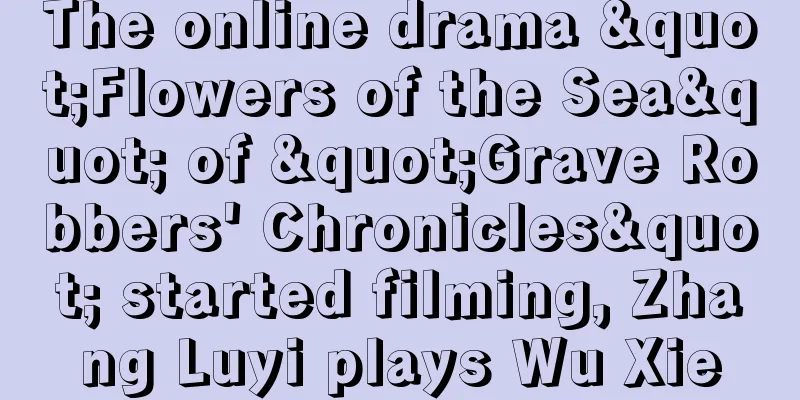Detailed review and evaluation of the first episode of Doraemon NTV video version

Doraemon (1973 Nippon Television Animation Version) - Looking back on classic animeDoraemon, which aired on Nippon Television from April 1 to September 30, 1973, was the first animated series based on the manga of the same name by Fujiko F. Fujio. The series follows the adventures of Doraemon, a cat-shaped robot who travels to the present day from the 23rd century in a time machine, and his friend Nobita Nobi. As the original story had few episodes, the anime also contains many original elements. This article will take a closer look at the appeal and characteristics of the 1973 version of Doraemon, as well as its subsequent influences. ■ StoryDoraemon, a cat-shaped robot, arrives in the present day in a time machine from the 23rd century. His goal is to change the past (i.e. the present) of Nobita, an elementary school student who faces a miserable future. Doraemon gives Nobita, who is kind-hearted but not good at studying and lives a carefree life, various tools created by future science. Using these tools, Nobita deepens his relationships with his friends and overcomes difficulties. ■Explanation"Doraemon" is originally a manga of the same name by Fujiko F. Fujio, and this 1973 anime was the first animated version of the manga. The basic setting follows the original, but since the original had few episodes, many original elements were added to the anime. There are three TV anime versions of "Doraemon": this one, which started airing in 1973, the one that started airing in 1979, and the one that started airing in 2005, but there are no clear names to distinguish between them. For this reason, this work is sometimes called "old Doraemon" or "NTV version Doraemon" (because the other two works are aired by TV Asahi). ■CastDoraemon was voiced by Kosei Tomita from episodes 1 to 13, and by Masako Nozawa from episodes 14 to 26. Nobita Nobi was played by Yoshiko Ota, Shizuka by Masako Ebisu, Gian by Kaneta Kimotsuki, and Suneo by Shun Yashiro. These voice actors brought their characters to life, creating characters beloved by viewers. ■ Main staffThe original work is by Fujiko Fujio (serialized in Shogakukan's educational magazine), the planner is Fujii Kensuke (Nippon Television), the planning cooperation is Shimizu Hiroji (Nippon Television), the producers are Kawaguchi Harutoshi, Yonezawa Takao (Nippon Television), Sasaki Kazuo, Hatakeyama Toshimi, the chief director is Kaminori Mitsuo, the scriptwriters are Yamazaki Haruya, Suzuki Yoshitake, Inoue Satoshi, Yoshihara Yukie, Umajima Mitsuru, Sonohe Zouji, the character designs are Takahashi Shigeyasu, Yamada Hidemi, the art director is Suzuki Morishige , Kawamoto Seihei, literary director Tokumaru Masao, director of photography Sugaya Nobuyuki (Studio Coral Reef), sound recording at Banchou Studio, developing at Toyo Development Laboratory, effects by Kataoka Yozo and Ogawa Katsuo (E&M Planning Center), recording at Kitayama Kenji, adjustments by Tanaka Hideyuki, editing by Nishide Eiko, music selection by Miyashita Shigeru, music by Koshibe Nobuyoshi, sound direction by Chikamori Keisuke, sound production by E&M Planning Center, and production by Nippon Television Animation. The theme songs are as follows.
■ Main CharactersDoraemon is a cat-shaped robot from the future that appears in Nobita's room and stays there. He is known for being able to pull out various gadgets from his pocket. Nobita Nobi is a poor elementary school student who is kind-hearted but timid. Shizuka is Nobita's friend, and Gian and Suneo are Nobita's classmates. These characters continue to be loved by viewers. ■SubtitleThe subtitles for the 1973 version of "Doraemon" are as follows:
■ Related worksBesides the 1973 version of Doraemon, there are also the 1979 and 2005 versions of the TV anime Doraemon. Each of these works is produced in a different style and direction, providing new appeal to the audience. ■ Theme songs and musicThe theme songs and music from the 1973 version of "Doraemon" are as follows.
■ Evaluation and impactThe 1973 version of "Doraemon" contained many original elements for the anime, as the original story had few episodes. This allowed viewers to enjoy new stories and characters. This was also the first TV anime version of "Doraemon", and it laid the foundation for the 1979 and 2005 versions that followed. In particular, Doraemon's character design and the voice actor's performance have had a major influence on later works. The 1973 version of "Doraemon" was also praised as a work that gives children dreams and hope. The way Nobita overcomes difficulties using Doraemon's futuristic scientific tools gave courage and inspiration to viewers. These elements have been carried over to later "Doraemon" series and continue to be loved by many viewers. ■RecommendationThe 1973 version of "Doraemon" is a work that combines nostalgia and freshness. Since the original story had few episodes, it contains many original elements for the anime, providing viewers with new stories and the charm of the characters. This work was also the first TV anime version of "Doraemon", and it has had a major influence on subsequent works. It is a work that can be enjoyed by children and adults alike, so be sure to give it a watch. Furthermore, the 1979 and 2005 versions, which were successors to the 1973 version of "Doraemon", were also produced in different styles and presentations, providing new appeal to viewers. By watching these works together, you can gain a deeper understanding of the world of "Doraemon". |
<<: Walking with Dad: Parent-child ties felt through NHK's famous song "Minna no Uta"
>>: Review of "Anime Shingacho" tracing the development of Japanese cartoon films
Recommend
The appeal and reviews of "Grisaia: Phantom Trigger THE ANIMATION": unmissable action and deep story
Grisaia: Phantom Trigger THE ANIMATION - The Batt...
Anno Hideaki will guest star in the Japanese drama "Ichigo no Crow" adapted from the manga
The official website of the live-action TV drama ...
The new trailer of the TV animation "Paladin of the World's End" confirms that it will be broadcast on October 9
The TV animation "The Paladin of the World&#...
"The Strong Beauty Shirakawa" was accused of plagiarism and the editorial department rarely came out to clarify
Kadokawa Publishing recently issued a statement t...
Johnson and Captain America join forces to attack "Red One" and the first Chinese trailer is released. Santa Claus is kidnapped
The movie "Red One: Winter Operation" s...
Dwayne Johnson recommends himself to be the next 007
After Daniel Craig gave up the role of British su...
Liu Cixin's novel adaptation film "Full-Band Blocking Interference" officially launched
The previous rumors came true. After "The Wa...
Donnie Yen confirms Sleeping Dogs live-action movie has been cancelled
In 2017, the open-world crime game Sleeping Dogs ...
The appeal and impressions of the Kemono Friends x Anisama 2017 collaboration
"Kemono Friends x Anisama 2017": The mo...
The first full CG short animation of the classic masterpiece "Big Eared Monkey" reveals Russian style
The first full CG short animation "Big-Eared...
The camping manga "Two-Man Single Camping" was announced to be adapted into an animation and will be broadcast in July 2025. The live-action drama adapted from the same name will be broadcast on January 9
The youth daily life manga "Camping for Two&...
The appeal and reviews of "Jyushin Enbu": A must-see anime guide
All-round evaluation and recommendation of Beast ...
The appeal and reviews of the movie "Kochira Katsushika-ku Kameari Kōen-mae Hashutsujo 2": What is it a must-see for fans?
"Kochira Katsushika-ku Kameari Kōen-mae Hash...
"PUI PUI Guinea Pig Che Che" Update Episode 12: The Daily Life of Guinea Pig Che Che
Today (March 23), the twelfth episode of "PU...
The Witcher Season 3 Chinese subtitle trailer will be released on June 29
Netflix's hit series "The Witcher" ...









